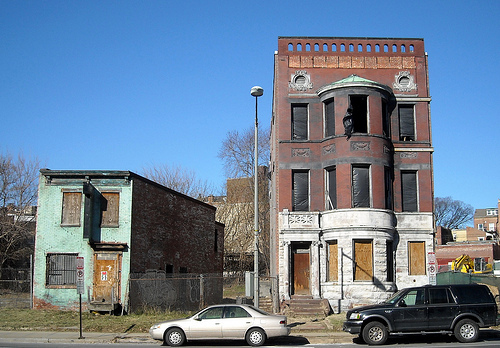Help us map out DC’s vacant buildings
DC doesn’t have an accurate count of how many vacant buildings it has, which means lots of missed opportunities for more tax revenue or new housing. We’ve created a map of the vacants the city knows about. Tell us about the ones that are missing, and we’ll send the full list to the DC Council before it votes on a law to fix the counting problem.
We’ve written about problems with DC’s system of accounting for vacant buildings and enforcing the regulations aimed at them a couple times over the past few months. It’s a mess of loopholes where owners can skirt detection and penalties by doing things like applying for work permits but not doing any actual work for years.
In a place like DC, where space for new housing is at such a premium, this is infuriating.
DC’s Department of Consumer and Regulatory Affairs publishes lists every year showing which properties it has officially designated vacant and blighted (which means a building is a threat to health and safety). When a building goes on the list, its owner has to pay higher tax rates of 5% for vacant buildings and 10% for blighted.
While the agency’s count is far from complete (which is a significant part of the problem), we thought we’d start by mapping out what it has provided:
Remember, these are not “For Lease” buildings, vacant lots, or buildings under construction. These are buildings that 1) have no occupants, and 2) have an owner who is not actively pursuing construction or new tenants.
DCRA most often investigates a building after receiving a report from a neighbor or agency, though many people will tell you they have filed reports repeatedly with little reaction from the agency.
Get out your red pens… we can correct this!
On Thursday, July 14th, the DC Council’s Committee on Business, Consumer, and Regulatory Affairs is having a hearing on a series of bills that would fix many of the problems with DCRA’s current system. Greater Greater Washington would love to submit testimony in support of that legislation, but we need your help.
If you know of or suspect a vacant building nearby, use the search function above to see if DCRA has already classified it as such. If it hasn’t, fill out the form below and help us collect further evidence that this system needs fixing.

